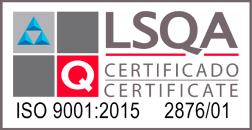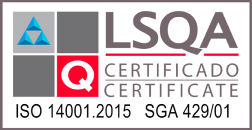Air quality is a global concern affecting human health and the environment worldwide. However, strategies and approaches to address air pollution vary significantly between regions with different economic and technological development levels. This article explores how government policies and regulations on air quality differ between countries in Latin America, such as Peru, Argentina, and Chile, and more developed nations, such as the United States and European Union members. This comparative analysis aims to shed light on the differences, challenges, and achievements in managing air pollution across diverse parts of the world.
Norms and Standards: An Evident Disparity
Air quality norms are stringent in more developed countries like the United States and numerous European Union member states and have been established for decades. National Air Quality Standards and Directives set maximum allowable limits for atmospheric pollutants ranging from sulfur dioxide to particulate matter. These regulations establish emission limits and encompass measures to curtail emissions from vehicles, industrial plants, and other sources.
Conversely, the lack of robust regulations and effective enforcement in Latin American countries can result in higher concentrations of atmospheric pollutants in urban areas and industrial regions. Although some countries in the region have implemented policies and regulations, the gap between these and the norms in developed countries remains evident.v
Implementation and Compliance: A Persistent Challenge
Implementing and enforcing air quality regulations is a challenge many Latin American countries face. The scarcity of financial, technical, and human resources can hinder the effective execution of air quality policies. Moreover, the absence of enforcement mechanisms may lead to a situation where regulations exist on paper but are not adhered to in practice. In developed countries, infrastructure and available resources typically support the implementation of regulations. However, even in these nations, challenges may vary depending on the complexity of emission sources and cooperation among different levels of government.
Technologies and Resources: A Decisive Influence
The availability of technologies and financial resources also influences countries’ capacity to address air pollution. Investment in clean and advanced monitoring systems has facilitated more effective air quality management in more developed countries. For instance, the European Union has adopted emission-reduction technologies and promoted the use of renewable energies. In contrast, in Latin America, limited investment in clean technologies can hinder the adoption of sustainable approaches. Nonetheless, some countries in the region have begun implementing measures to reduce emissions and enhance air quality, particularly in urban areas grappling with pollution issues.
Health Impacts: Regional Disparities and Shared Challenges
Differences in air quality regulations and policies also translate into varying health impacts on populations. In developed countries, air quality measures have led to decreased rates of respiratory and cardiovascular diseases linked to atmospheric pollution. Conversely, prolonged exposure to pollutants in Latin America may contribute to a higher prevalence of such diseases.
Strategies and Opportunities: Towards a Sustainable Future
Despite the inherent challenges, Latin America possesses strategies and opportunities to improve air quality and ensure a healthier future for its inhabitants. Investment in clean and sustainable technologies emerges as an essential pathway. By promoting and adopting more efficient and less polluting technologies in crucial sectors like industry and transportation, countries in the region can drastically reduce atmospheric pollutant emissions and mitigate impacts on public health.
Promoting public transportation and encouraging sustainable mobility options also present valuable opportunities. Vehicular congestion is a significant source of pollutant emissions in urban areas, and advocating the use of public transport, cycling, and walking not only curbs emissions but also enhances air quality and contributes to healthier urban environments.
Adopting renewable energy sources is another pivotal element in the journey toward a sustainable air quality future. Generating electricity from sources like solar and wind reduces reliance on fossil fuels and curtails emissions of atmospheric pollutants and greenhouse gases. The transition to a cleaner and renewable energy matrix is an opportunity Latin America can leverage to enhance air quality and environmental sustainability.
Regional cooperation is pivotal in expediting progress toward effective regional air quality policies. Exchange of best practices, collaborative implementation of clean technologies, and formulation of consistent regulatory frameworks can help Latin American countries overcome common challenges. The experiences amassed in developed countries can serve as guiding lights, while solutions tailored to the realities of Latin America will ensure more successful outcomes.
Conclusion
Air quality management is a global challenge necessitating a collaborative approach tailored to each country’s realities. While differences between developed countries and Latin America are evident, it is crucial to recognize that all nations play a role in preserving clean and healthy air. We can move towards a future where air quality knows no boundaries through robust regulations, investment in clean technologies, and collective efforts.











